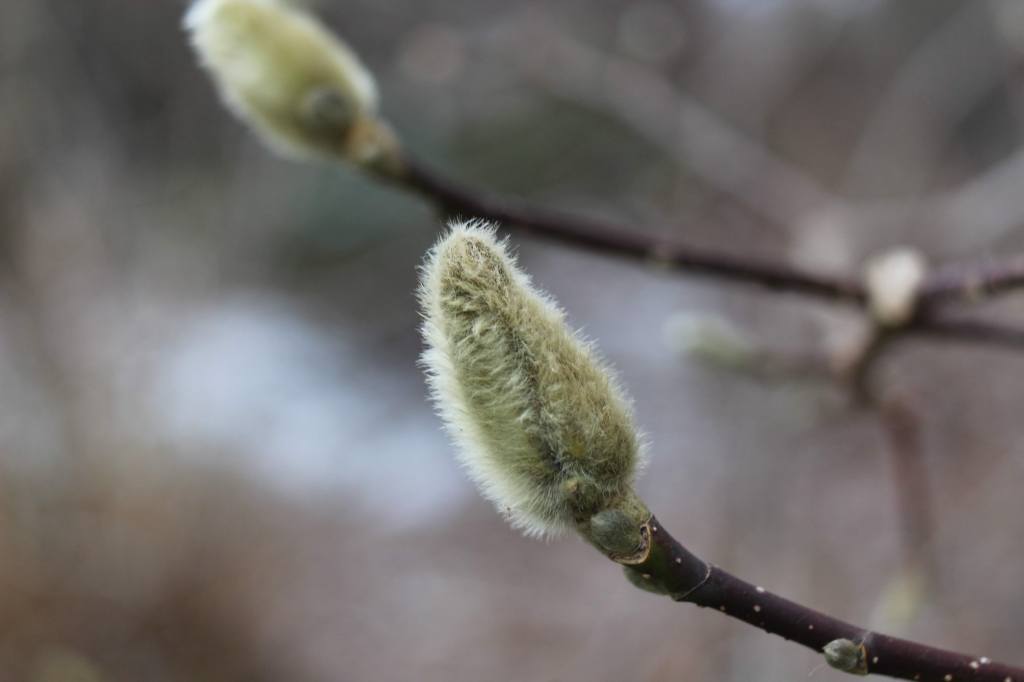Not unusually, I am conflicted by the relative lacking of witch hazels in the garden. Always, there is something that must be had such as the sturdy and beautiful witch hazels, but with little open space available for shrubs, and less in sunny spots, decisions to purchase must be delayed until the off seasons. To decide in January that more witch hazels are necessary weighs too heavily on emotion. Of course, more fragrant, brightly colored blooms are required while in the throes of the gray winter, but will this stand in May, or August?
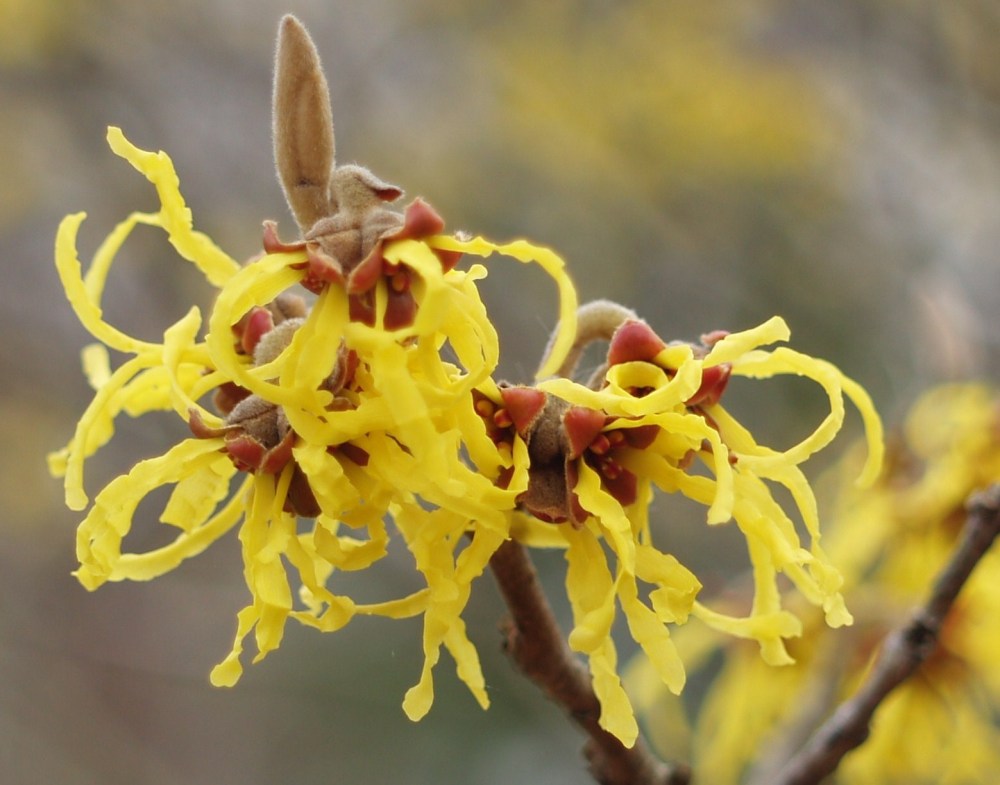
Complicating this matter is the changing state of the somewhat sunny lower half of the rear garden in recent years. This area was once ideal for an ‘Arnold Promise’ (Hamamelis x intermedia ‘Arnold Promise’, above) witch hazel that grew taller than ten feet. But, a nearby seasonal spring became less seasonal, and over several years this splendid shrub declined and finally perished. Additions into this damp ground must be carefully considered, and even native Common (Hamamelis virginiana) and Vernal witch hazels (H. vernalis, below) have been determined to be intolerant of this nearly constant wetness.
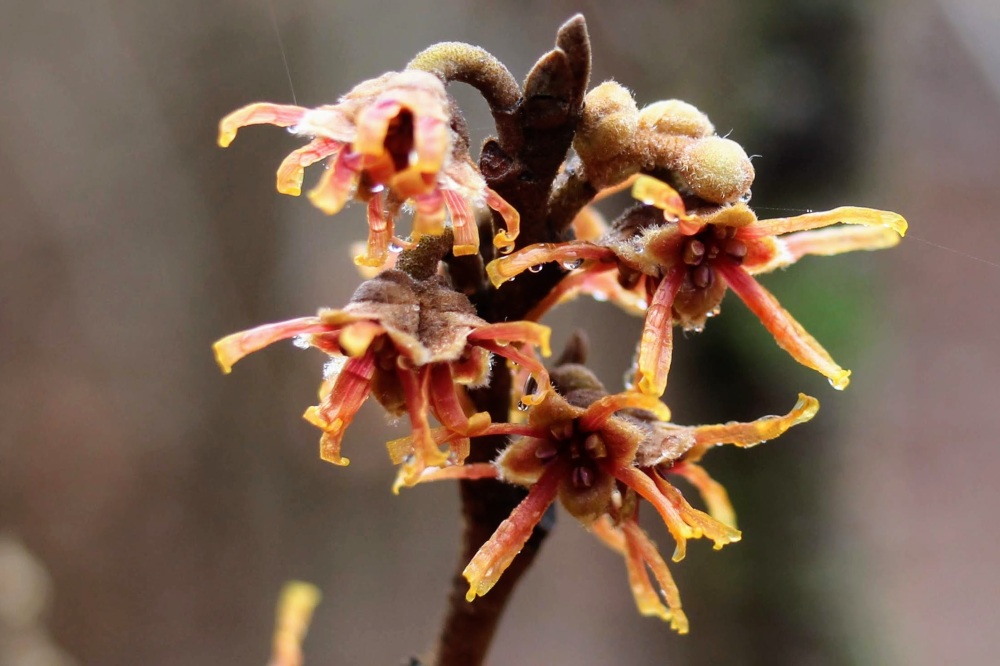
A year ago, substantial repairs were made to drainage along the less sunny western border of the lower garden where a vernal witch hazel also failed, caused in large part by a fourteen month period of greatly increased rainfall. In the now drier ground (with more typical levels of rain), another vernal witch hazel is thriving, and not far away a second ‘Arnold Promise’ has survived a second year in ground that was questionably damp.
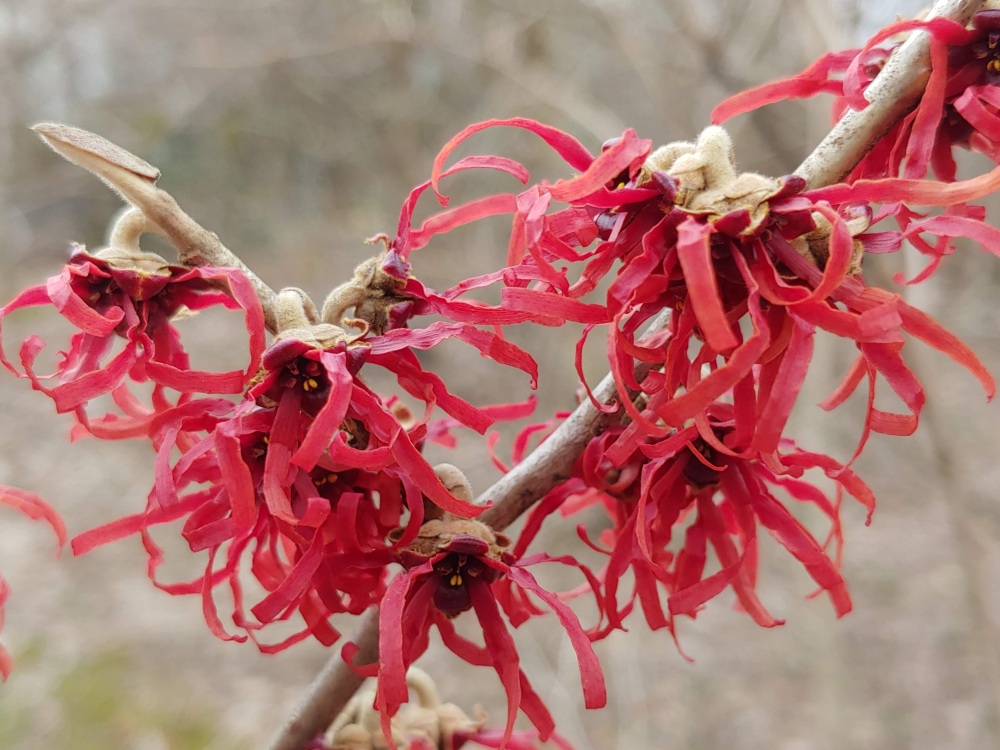
Three witch hazels, two ‘Jelena’ (below) and ‘Diane’ (above), are planted with arguably poor prospects with increasing amounts of shade as neighboring trees age. While ‘Jelena’ flowers satisfactorily (for now), ‘Diane’ has only a few flowers, and it must be relocated out from under low branches of swamp maples at the forest’s edge. But to where? And, while the garden’s residing witch hazels are all very common, there are several less widely distributed witch hazels that call to me, not only in January but also in July.
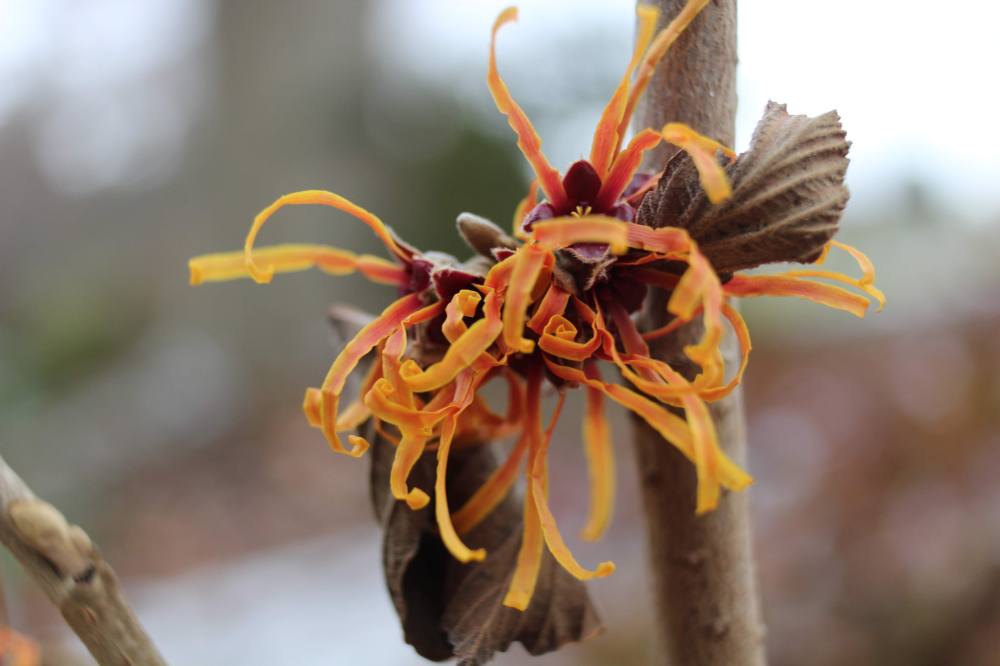
Of course, I have ideas. A camellia in a clump of ‘Evergold’ carex can be moved, and it will tolerate more shade, so this is probable though perhaps it is a bit close to the driveway for a shrub so large as witch hazel. Will this be best suited to the red flowered ‘Diane’, or some more brightly colored selection? And, where to plant others?
Probably, I’ll be satisfied to add two new witch hazels, and to find a new, less shaded home for ‘Diane’. A certain amount of cramming might be required, but that’s old hat in this garden, so plans will proceed, even without firmed up locations for the new plantings. And while I am thinking of cramming inappropriately, or not, I must consider space for another of the many spring flowering magnolias that I dream about. A more space consuming shrub or tree, certainly, but a worthy addition if room can be carved out.
